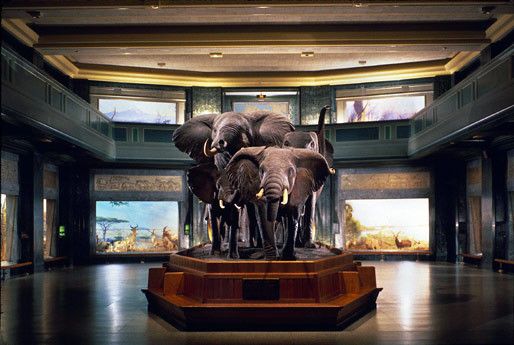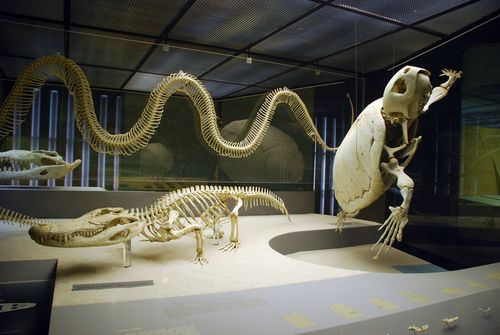American Museum of Natural History – permanent exhibitions
The AMNH has several standing exhibitions that you can see at any time. They are known as the permanent exhibitions and are a major attraction at the museum.
Biodiversity and Environmental Halls
The Biodiversity hall is dedicated to the life of planet Earth. It showcases rare and exotic plants and animals. Visitors can receive information about the factors that threaten biodiversity. One of the expositions is dedicated to Dzanga-Sangha Rain Forest. Dzanga-Sangha is home to many endangered mammals, birds, insects, and plants. In order to protect them from extinction, the government of the Central African Republic has created Dzanga-Ndoki National Park and Dzanga-Sangha Dense Forest Reserve.
You can also visit the Dodo bird exposition, and gain some info on topics like what caused its extinction, and their link to pigeons.

Birds and Reptiles and Amphibian Halls
As the name suggests, The Hall of Reptiles and Amphibians examines all aspects of the life of the mentioned creatures. You can learn more about their anatomy, defense, food preferеnce, reproduction, habitat, as well as the amphibian part of the evolution of the mammals. Visitors may see the physical shape of these first inhabitants of our planet. There are separate expositions dedicated to frogs, tortoises, crocodiles.
The Hall of Birds of the World is divided into 12 dioramas. Each of them presents a different biome – an area inhabited by particular species. Visitors can see birds from all parts of the world. They will also learn which kinds are extinct. The hall presents species from the Gobi Desert, Canadian tundra, the high Alps, Australia.

Earth and Planetary Sciences Halls
The Earth and Planetary Sciences Halls show specimens that help scientists to trace the origins of our solar system and our planet.
Arthur Ross Hall is dedicated to meteorites and all the pieces of rock that came from space. Visitors can see more than 130 meteorites, amongst which is also the 34-ton Cape York Meteorite known as Ahnighito, as well as rocks from Mars and the Moon.
Human Origins and Cultural Halls
The Hall of Human Origins explores the evolution of humankind. Visitors will be taken 6 million years back when our first ancestors lived. People can see life-sized tableaux of Homo erectus, Neanderthals, Cro-magnons. Each species is shown in its habitat.
The Cultural Halls are dedicated to the exploration of the culture of Asia, Africa, North and South America, and the Pacific. The Hall of African Peoples presents Africa's heritage from ancient Egypt. Visitors can learn about all aspects of life in Africa through artifacts, dioramas, religious objects, and different tools. In the Hall of Mexico and Central America, visitors can see expositions of artifacts, monuments, pottery, jewelry from the Maya, Aztec, and other Mesoamerican cultures.



